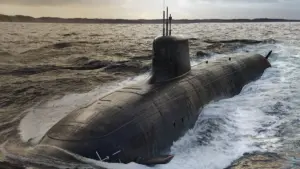
Two high level members of the House Armed Services Committee on Tuesday said they are “bullish” that Congress will ultimately pass legislation enabling key elements of the tripartite AUKUS deal to help Australia buy and build its own nuclear-powered attack submarines (SSN-AUKUS), but noted Australia must hit milestones before the U.S. sells its submarines. Speaking during a discussion at the Politico Defense Summit on Nov. 14, Rep. Joe Courtney (D-Conn.), ranking member of the House Armed Services subcommittee on Seapower…

 By
By 











